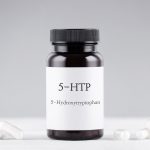
Only 13% of American adults understand the purpose of the 988 Suicide and Crisis Lifeline nearly a year after its widely publicized launch, a new survey from the Pew Charitable Trusts shows. “There is an opportunity and a need for state and local leaders to launch inclusive awareness campaigns in the months ahead,” lead researcher and Pew senior manager Tracy Velázquez said in a statement, CNN reported. “The federal government’s most recent investment into 988 shows a commitment to building a strong crisis care infrastructure in the country — one that is critically important, given the many people experiencing mental health and substance use issues,” Velázquez added. The 988 line began last year after it was changed from 1-800-273-TALK. It was previously called the National Suicide Prevention Lifeline. Pew surveyed more than 5,000 adults in April, finding that once people knew about the 988 crisis line, about 7 in 10 said they were somewhat or highly likely to use it. Respondents also had some concerns about where calling the line might lead them. About 2 in 5 of those surveyed worried that calling 988 would lead to police arriving at their home, being forced to go to the hospital, being charged for services they couldn’t afford or having other people learn about the call. Race played a part in the results: Twice as many white… read on > read on >


















